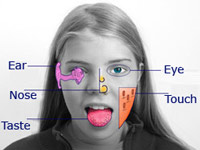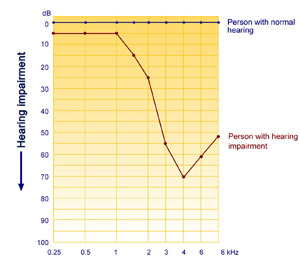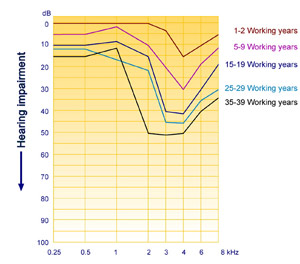FAQ
Why ENT care now ?
Concept of good health care is shifting from Mortality care to Morbidity care. ENT specialist has 3 of the 5 special senses, namely Hearing, Smell and Taste under its care. The 6th newly included special Sense of Balance is also related to the ear. Care of hearing, taste, smell, voice and balance care come under ENT. So morbidity and wellness care is incomplete without ENT care

Why should I choose Shravan ?
Three special senses one destination
Core competence is better achieved by single specialty centers compared to multi-specialty center. Shravan was conceived out of this concept to offer top quality ENT services in friendly / Homely setup. Promoted by technocrats Shravan provides wellness, preventive, diagnostic, rehabilitative and therapeutic world class ENT health care. Three special sense one destination.
Shravan follows the philosophy of minimal hospitalisation, as healing is better when the mind and body is healthy [Which is difficult in a hospital setting]. We achieve this by encouraging the patient to lead a normal enjoyable active life, outside the hospital setup, during the healing period.
What’s Medical tourism ?
When any patient needs a surgical intervention / hospitalization of a short duration we group them as Medical Tourists /Tourists Patients. The patient after surgery goes on a tour during the healing time.
In ENT practice most of the surgeries / procedures are “Surgeries of perfection and not Surgeries of risk”. So we are able to keep hospitalization to the minimum without compromising the quality of care. Like in Ear surgery [Tympanoplasty] normal hospitalization period is1 ½ days only.
Treatment is offered for most ENT conditions like in any ENT Hospital
For further details contact us through email / telephone with available medical details.
Services Offered
- Cosmetic surgery Nose / Lip /Ears
- Microsurgery Ear
- Microsurgery Vocal cords [ Phono]
- FESS [Endoscopic surgery for Sinusitis]
- Correction surgery for Snoring.
- All Routine ENT surgeries like, Adeno - tonsilectomy, Septoplasty etc.
What is hearing impairment ?
When a person is not able to hear as well as a normal hearing person then they have hearing impairment. There are several levels of hearing impairment.
We call profound hearing loss Deafness or we say that person is Deaf. A deaf person if not treated in time continues to be Dumb. People use the term Deaf and Dumb or Deaf mute for these individuals.
What are the types of hearing loss ?
Conductive hearing loss-Disorder of the outer and or middle ear. This can be treated in majority of the case by medicine / surgery.
Sensorineural Hearing loss [Commonly called Nerve deafness] - Disorder of the inner ear. Such hearing loss is irreversible once stabilized. Hence cannot be cured. We treat the patient by compensating the loss by fitting a suitable hearing aid [Like spectacles]
Mixed Hearing loss- When elements of both conductive and Sensorineural hearing loss are present.
What are the causes of hearing loss ?
The list is very exhaustive. It can occur at any age. The common ones are -
- Cosmetic surgery Nose / Lip /Ears
- Natural aging process
- Congenital / Hereditary
- Illness / complications at birth
- Ear infections.
- Injury / Tumors
- Toxic medications
- Exposure to sounds
What are the causes of hearing loss ?
The list is very exhaustive. It can occur at any age. The common ones are -
- Natural aging process
- Congenital / Hereditary
- Illness / complications at birth
- Ear infections.
- Injury / Tumors
- Toxic medications
- Exposure to sounds
What are the common warning signs / symptoms of Hearing loss ?
- Using what or huh or sorry frequently.
- Missing the punch lines of jokes / loss of self confidence.
- Asking others to repeat themselves.
- Avoids group meetings, social or family gatherings where listening may be difficult.
- Turning up the TV or radio louder than others prefer.
- Difficulty in understanding conversation with background noise
- Turning one ear towards a speaker in order to hear better.
- Hearing some people more clearly than others.
- Hears conversation but has difficulty in understanding words.
- Switching ears continually when the phone is utilised.
- Sudden dip in performance level in the class, without an obvious reason.
- Performs better when made to sit in the front row in the classroom.
- Child frequently described as restless, impatient, forgetful or socially inappropriate.
How to suspect hearing loss in a child ?
Hearing loss in a child should be suspected, if response of your child is not appropriate. When the child is Lazy, Inattentive or Naughty. When there is delay in speech development. For further detail look in common warning signs.
Whom / How to be tested for hearing loss ?
- Every new born child [Early intervention program] Every primary school child yearly check [Hearing conservation program] Workmen exposed to sound yearly check. [Hearing conservation program] Every individual on reaching 50 years. When any of the warning signs of hearing loss is seen.
- How to test - When you suspect a hearing loss visit a Hearing health care centre for a hearing test. Hearing test is easy, comfortable and safe. Your ability to hear volume of different frequencies are tested and plotted on a graph which is called an audiogram. This helps to determine the type and degree of hearing loss and is used as a guide during treatment.
Children are tested by a combination of computerized objective hearing tests namely, Threshold BERA, Impedance studies etc.

When to fit a Cochlear Implant
The Cochlear implant has its limits and risks. The apparatus does not normalize hearing and the sound that is generated by the implant differs from normal hearing. Children and their families who decide to pursue cochlear implant as an option must meet a minimum set of criteria’s. To name a few:
Should be bilateral profound hearing loss.
Obtain limited or no benefit with good binaural hearing aid trial.
No medical / surgical contraindications.
Spoken language as a primary mode of communication.
In pre lingual children above 3 years parents should be counseled on the limitation of language development.
Strong motivation and family support is a must.
Realistic expectations. Parents / family should be told on the drawbacks of implant too.
Assessment should be made after good AVT sessions are given to the child and their families.
Whom / How to be tested for hearing loss ?
- Non auditory [Indirect] effects of noise: - Lack of sleep, sleep disturbance, irritation, fright, decrease in work efficiency, Psychological distress, increase in heart rate etc.
- Auditory [Direct] effects on hearing on prolonged exposure:
Noise Induced Temporary Threshold Shift [TTS]: - On exposure to any sound stimulus fatigue sets in. When exposed to long duration TTS sets in. The amount of fatigue that occurs is more or less related to the sound intensity and duration. Full recovery is seen in 16 hrs if complete rest is given. Initial Hearing loss induced by prolonged exposure to noise can be detected by seeing a dip at 4000 Hz in the audiogram.
Noise Induced Permanent Threshold Shift [PTS]: - When exposure time is more than 8 hours or very of high intensity then PTS occurs. Here there is permanent damage and full recovery is not seen.

Auditory Verbal Therapy
- [Adopted from principles developed by Doreen Pollack 1970] An Auditory-Verbal practice requires all 10 Principles. The term “Parents” also includes Grandparents, relatives, guardians and any caregivers who interact with the child.
- Promote early diagnosis of hearing impairment in newborns, infants, toddlers, and children, followed by immediate audiologic management and Auditory-Verbal Therapy.
- Recommend immediate assessment and use of appropriate, state-of-the-art hearing technology to obtain maximum benefit of auditory stimulation.
- Guide and coach parents to help their child use hearing as the primary sensory modality in developing spoken language without the use of sign language or emphasis on lip-reading [Auditory-oral therapy].
- Guide and coach parents to become the primary facilitator of their child’s listening and spoken language development through active consistent participation in individualized Auditory-Verbal therapy.
- Create environment that support listening for the acquisition of spoken language throughout the child’s daily activities.
- Guide and coach parents to help their child integrate listening and spoken language into all aspects of the child’s life.
- Guide and coach parents to use natural developmental patterns of audition, speech, language, cognition and communication.
- Guide and coach parents to help their child self-monitor spoken language through listening.
- Administer ongoing formal and informal diagnostic assessments to develop individualized Auditory-Verbal treatment plans, to monitor progress and to evaluate the effectiveness of the plans for the child and family.
- Promote education in regular classrooms with typical hearing peers and with appropriate support services from early childhood onwards.
Noise Induced Temporary Threshold Shift [TTS]: - On exposure to any sound stimulus fatigue sets in. When exposed to long duration TTS sets in. The amount of fatigue that occurs is more or less related to the sound intensity and duration. Full recovery is seen in 16 hrs if complete rest is given. Initial Hearing loss induced by prolonged exposure to noise can be detected by seeing a dip at 4000 Hz in the audiogram.
Noise Induced Permanent Threshold Shift [PTS]: - When exposure time is more than 8 hours or very of high intensity then PTS occurs. Here there is permanent damage and full recovery is not seen.

